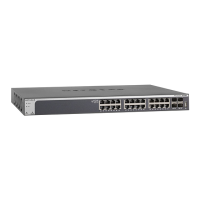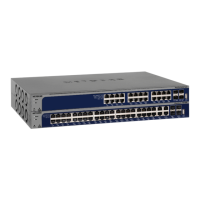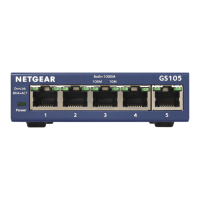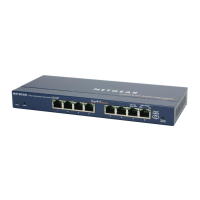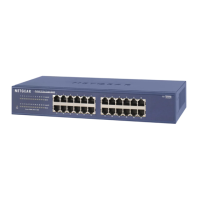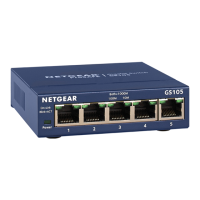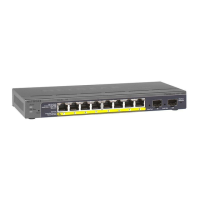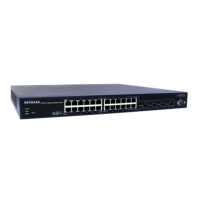Quality of Service
110
XS728T ProSAFE 28-Port 10-Gigabit L2+ Smart Switch
a prefix is FFFF:FFFF:FFFF:FFFF:FFFF:FFFF:FFFF:FFFF. The valid range for a
prefix length is 0–128.
• Destination L4 Port. Select a known destination Layer 4 ports. If you select Other,
enter a protocol number in the field that appears.
• IP DSCP. Select a known DSCP value. If you select Other, enter a protocol number in
the field that appears.
3. Click Apply to save the class. Configuration changes take effect immediately.
Policy Configuration
Use the Policy Configuration screen to associate a collection of classes with one or more
policy statements. After creating a policy, click the policy name to go to the Policy
Configuration screen.
To configure a DiffServ policy:
1. Select QoS > DiffServ > Advanced > Policy Configuration.
2. Enter a policy name in the Policy Name field.
The available policy type is In, which indicates the type is specific to inbound traffic. This
field is not configurable.
3. Select an existing DiffServ class in the Member Class field to associate with the policy, and
click Add.
To configure this policy, proceed to To configure the policy attributes: on page 110.
To configure the policy attributes:
1. In the Policy Configuration screen, click the name of the policy (which is a hyperlink).
2. Configure the policy attributes by selecting the check box associated with the attribute to be
configured and then entering the required data:
• Assign Queue. Select the destination queue. There are eight queues with valid
values from 0 to 7 (7 is the highest).
• Drop. Select this option to drop packets for this policy-class.
• Mark VLAN CoS. Select the specified Class of Service queue number to mark all
packets for the associated traffic stream with the specified Class of Service value in
the priority field of the 802.1p header. If the packet does not already contain this
header, one is inserted.
• Mark IP DSCP. Select an IP DSCP value. All packets for the associated traffic stream
are marked with this value. If you select Other, enter a custom value in the DSCP
Value field that appears.
• Simple Policy. Select this radio button to establish the traffic policing style for the
specified class. The simple form of the policy command uses a single data rate and
burst size, resulting in two outcomes: confirm and violate.
3. If you select the Simple Policy radio button, you can configure the following fields:
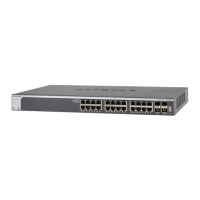
